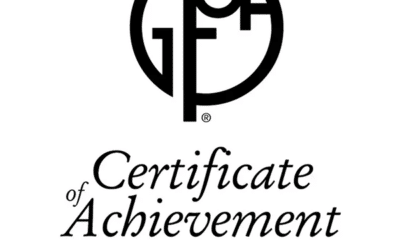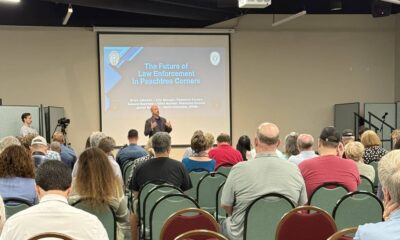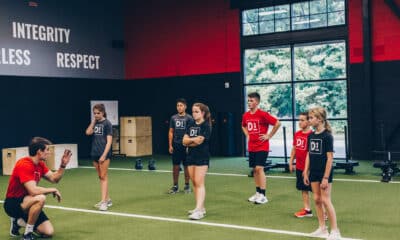Community
A Summer Daze Camp Preview
Published
4 years agoon
By
Kelsey Asher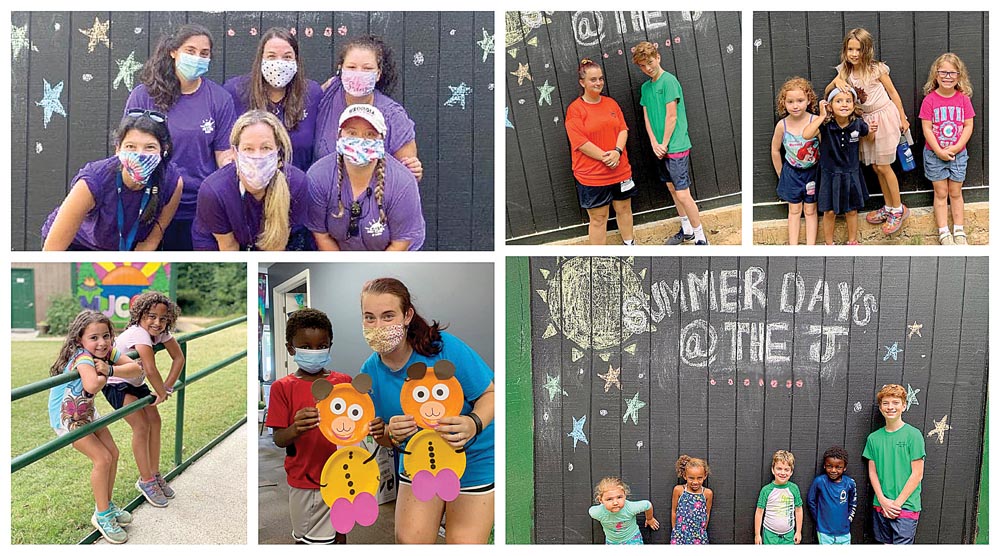
Sports, s’mores and plenty more await camping kids this summer. Though it may seem a tad early, camp rosters will fill up fast as occupancy may be limited for safety. Don’t miss out on the perfect camp for your child.
Please note that, as well that with current health considerations, changes in camp schedules may occur. So please contact camps directly for the most up-to-date information.
MJCCA Summer Camps 2021
The Marcus Jewish Community Center of Atlanta (MJCCA) Camp Catalog is made up of many interesting offerings for single or multi-week camps, kicking off the first week of June and coming to a close in mid-August. All camps will be held at Zaban Park, except the sleepaway Camp Barney Medintz in the north Georgia mountains.
Fees start at $385 a week, with preferred pricing for members of MJCCA and discounts for attending multiple weeks of camp. Before and after care may or may not be offered, so stay tuned.
The traditional day camp experience offered is Camp Isidore Alterman (CIA) and CIA Jr. CIA Jr. is for Rising Pre-K and CIA welcomes Rising K-6th Grade. Camp fun activities on deck include canoeing, archery, arts and crafts, bumper boats, fishing, swimming and so much more. Children will be organized into small groups of no more than 15 in a cohort model, to avoid too much unnecessary mixing.
Hoping to keep up their game in the off season? Sports at MJCCA is a solution. From improving their backhand in Tennis to getting into the swing of things with Intro to Golf, a sports-minded kid has many options to choose from.
If your kid has a flare for the dramatic instead of a flare for the athletic, have them join the cast of The Little Mermaid Jr. or Shrek the Musical Jr. in a multi-week camp experience, or perhaps twinkle their toes in one of MJCCA many dance camps. There are also an astounding number of theme camps available that explore specialized hobbies, art and professional interests.
Interested but on the fence? Small in-person group tours with MJCCA’s camp directors will be held on select days to give parents and kids alike a chance to see where the summer fun happens, learn about camp and ask questions. Tours are scheduled for March 14, March 21 and April 18. There is a 10:30 a.m. group and a 1:30 p.m. group.
A Virtual New Parent Orientation is to be held May 4, 6:30 to 8:30 p.m. This will allow parents yet one more avenue to ask questions and know what to expect this summer.
Get a more complete overview of MJCCA Camp information by visiting mjccadaycamps.org for the full 2021 camp catalog and schedule.
Camp All American
Camp All American is the recreational camp ministry of Perimeter Church, created to serve Johns Creek area kids in an enriching, safe environment. They also have satellite camps at other churches around Atlanta — and even one in Florida.
This week-long summer camp is open June 1 to August 6. Summer registration opens February 7 at 10 p.m. When you sign up for camp, your child is divided into smaller “camp groups” depending on gender, specialty and grade.
Ages served range from 5 years all the way to 11th graders in the CIT program. Day camp and sleepaway camp options are available.
Learn more by attending one of their Discovery Days for an opportunity to meet the staff, tour the campus and ask questions about Camp All-American. Registration for Discovery Day opens February 10. The first tour option is March 21 at 1:30 p.m.; May 1 at 3:30 p.m. is the second. For more information or to register, visit campallamerican.com.
Camp Evergreen
Camp Evergreen is a Christian camp located in the serene mountains of north Georgia near Lake Burton. It has its own manmade self-contained lake (dubbed Lake Dean), that boasts a blob water feature, as well as a zipline and a swimming hole supervised by licensed lifeguards. Other activities on deck include canoeing, campfires, hiking, horseback riding (for an additional fee) and the list goes on.
The camp is wilderness centered and believes nature can speak on its own without extras. Programming intentionally leaves out bells and whistles and focuses on creative, fun approaches to all activities. The staff does their best to make sure every child is comfortable, which is reflected in the wide array of camp options they offer.
Campers can come for a four-day day camp from 9 a.m. to 4 p.m. that is integrated into ongoing Overnight Camp sessions, or stay overnight in a 4-day, 7-day, 10-day or 14-day stint depending on age. Cost varies depending on the option selected, so hike to campevergreen.org to get a full view.
Camp Flashback
As a sponsored program of the Dunwoody Preservation Trust (DPT), Camp Flashback transports kids to a simpler time, allowing kids to be kids in the shining sun while learning about the great history of Dunwoody. They’ll enjoy summer fun and learning at Dunwoody’s only authentic history camp — the Donaldson-Bannister Farm — staffed by loving, licensed educators with a low kid-to-staff ratio of 5 to 1. Campers must be age 7 to 12 years.
Kids will spend their days like 1870s farm children, with old-fashioned activities like hand-churning butter and ice-cream, milking and feeding goats, grooming a pony, weaving, sewing and an ever-growing list of things to do.
Registration is open now for five one-week sessions: June 14-18, June 21-25, June 28-July 2, July 12-16 and July 19-23. Pricing starts at $235 per camper per week, with discounts for DPT members. Flash over to dunwoodypreservationtrust.org/camp-flashback/ for additional information.
Club SciKidz Camps
Dust off your beakers and safety googles, because ClubSciKidz has STEAM education fun planned this summer! The Club SciKidz crew will be setting up shop at St. Luke’s Presbyterian Church in Dunwoody for four weeks, from June 21 through July 19.
Camp themes offered include Coding Kaleidoscope, Robot Engineer, Young Surgeon, Emergency Veterinary Medicine, Mystical & Magical (Harry Potter), and much, much more.
For more information on camp themes and camp locations, visit clubscikidz.com/camp-locations/#atlanta-science-day-camps.
Dunwoody Nature Center
Learn all about the creatures that make their home in the forest wonderland around Dunwoody Nature Center, with a delightful mix of full and half day camps. The camp schedule kicks off June 1 and continues through August 13.
Explore some exciting camp focuses like Up in the Air, a deep dive into the world of animals that fly, soar and zoom in the sky. Or maybe Creek Week is more your speed, splashing around the locally famous Wildcat Creek and learning about the vitality of its ecosystem. Or what about Ooey Gooey Science, chock full of hands-on experiments to foster a genuine scientific interest? And that’s just the start!
The standard cost for a full five-day camp is $275 for members and $310 for non-members. Campers aged 3.5 to 4 are invited to attend from 9:30 a.m. to 1 p.m., and Rising K-5 attend for a full day until 3:30 p.m.
Early Bird drop-off begins at 8 a.m., with a $45 charge for five days, and late pickup is offered for K-5 until 6 p.m. with a $70 charge for five days. Register at dunwoodynature.org or call 770-394-3322.
GAC Summer Camps
With more than 30 summer enrichment programs in athletics, arts, academics and fun, Greater Atlanta Christian School (GAC) campers have a daily opportunity to make new friends, explore new talents and experiences in a safe, Christian environment. The incredible group of trained counselors make sure your child will be encouraged and celebrated in all they do.
GAC Summer Camps are slated to commence June 7 and continue through the end of July. Virtual camps will be added, and other camp programs as well, as safety guidelines allow.
Pricing varies depending on the program. Before and after care is available for some camps. Learn more at greateratlantachristian.org/summer-camp/summer-camp.
The High Museum of Art Camps
Dive into art this summer at the High! Young artists will explore the museum’s galleries, create original artworks and showcase their masterpieces in a special exhibition each week. Campers also will learn about the Museum’s collection and special exhibitions while honing their skills in drawing, painting, and design.
Professional teaching artists will inspire your child to look closely, experiment with materials, and try new techniques. Their weeklong camps are designed to serve rising 1st through 8th graders.
The High Museum member price is $350 per week, $450 for non-members. Official camp programming spans from 9 a.m. to 4 p.m. daily, with aftercare available until 6 p.m. for an added $50 fee. Registration opens February 9. Camps sessions begin June 7 and will continue through July 30.
Pace Academy Summer Programs
A special message from Pace Academy: “At Pace, we believe some of life’s greatest lessons are learned outside the classroom. When school is not in session, we offer programming to keep children — Pace students and students from other schools — active and engaged. We offer full day and half-day summer camps; specialty programs like Athletic Camps, Danger Camp and Theatre Workshops; STEM Camps and Clinics; and Academic Enrichment Opportunities.”
We offer the opportunity for your camper to be registered in two separate half day programs to create a full day camp experience for your camper. Your camper will need to pack their lunch, but we will supervise your camper at lunch so they can stay on campus for all day fun!”
Registration is open for all camps. For information and pricing, visit paceacademy.org/programs/summer-programs.
Primrose School of Peachtree Corners Summer Adventure Club
At Primrose School’s Summer Adventure Club, children become engineers, artists, explorers and more as they discover the joys of design thinking, a fun and innovative way to learn.
Camps are available for children in grades K-5. Stay tuned for dates and times at primroseschools.com, and be sure to choose the Peachtree Corners location.
Related
Kelsey Asher is a proud graduate of the University of West Georgia with a Bachelor’s in Communications. She has held a variety of marketing leadership roles for several small, startup companies in a variety of industries including publishing, construction and technology.

City Government
Peachtree Corners Hosts Discussion About the Future of Local Policing
Published
2 days agoon
May 12, 2025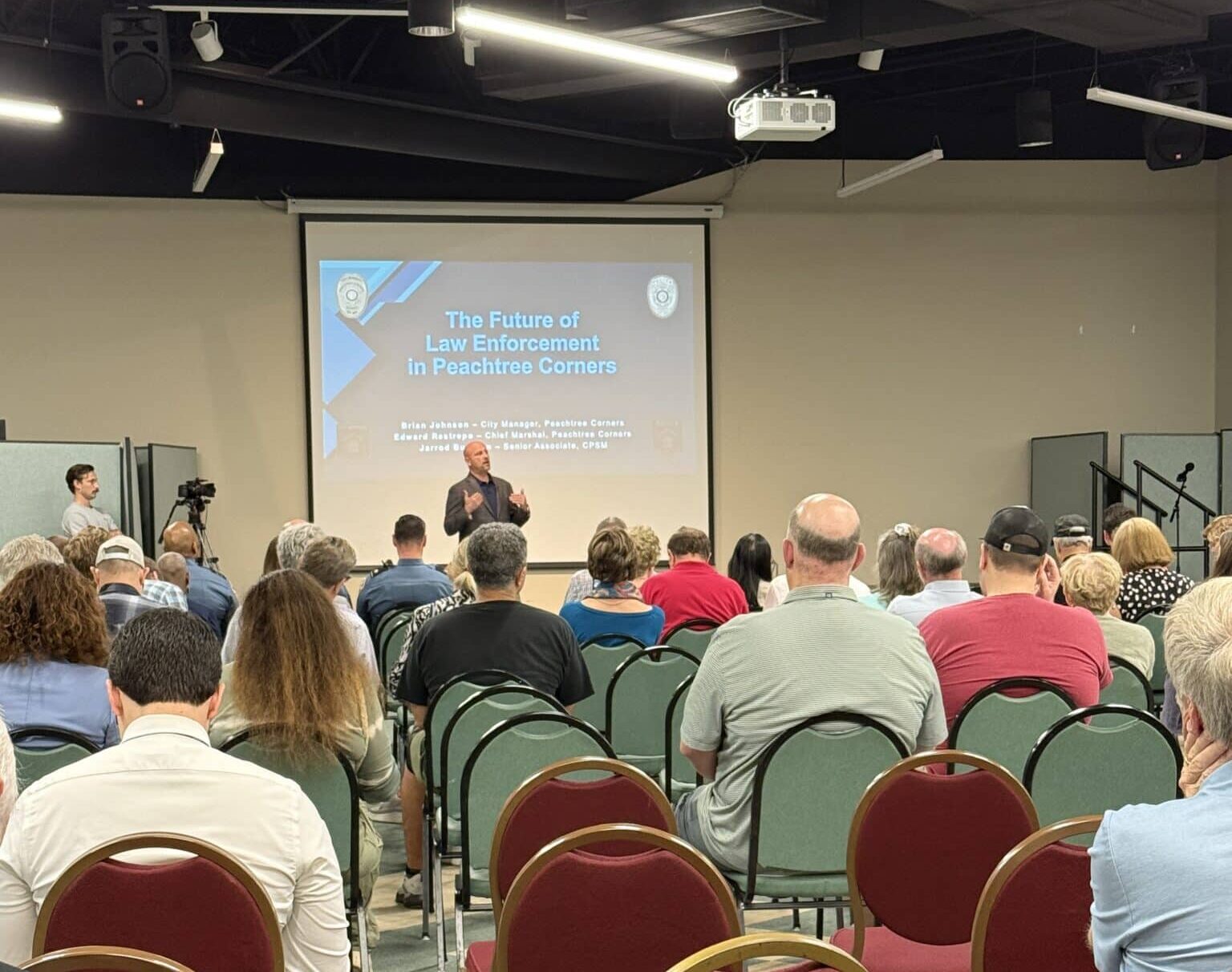
Although crime isn’t on the rise, and the Gwinnett County Police Department (GCPD) is fulfilling its role in fighting crime, the City of Peachtree Corners is asking residents, business owners and city stakeholders if they believe the city should form its own police department.
With close to 200 people in attendance, City Manager Brian Johnson led the discussion about the future of policing in Peachtree Corners. He presented the findings from a survey conducted by the Center for Public Safety Management (CPSM), a nationally-recognized law enforcement consulting and training firm, as well as information about patrol officer staffing, response times, costs to tax payers and a potential timeline.
Ensuring public safety
Johnson kicked off his presentation by explaining that it is the duty of the mayor and city council to ensure public safety, including reviewing law enforcement.
“Maybe it needs to grow, maybe it needs to change its focus. But city council is the one that has the decision-making responsibility,” he said.
He was also adamant that this isn’t a done deal.

“I hit this point already, but I want to hit it again. This is the start of a conversation, a community conversation and feedback to council. There hasn’t been a decision,” he said. “Council has not received this presentation from me. They’re here to watch and learn from your feedback of this.”
Mayor Mike Mason was present at the meeting, along with all of the city council members except Eric Christ who was out of town and watching remotely.
Issues and obstacles
Johnson explained that the grounds for the inquiry were based on issues about communication, access to information and enforcement of city-specific ordinances. He cited an example where a city rule that private residences can’t be rented on a short-term basis like Vrbo or Airbnb wasn’t enforced by GCPD. An owner tried to circumvent the ordinance by only renting the outside of the house. A loud pool party ensued, and frustrated neighbors dialed 911.
“Officers showed up and they said, ‘We can’t enforce the city’s noise ordinance,’” Johnson said.
The first stage to fix this problem was creating the marshal program to bridge the gap between code enforcement and GCPD.
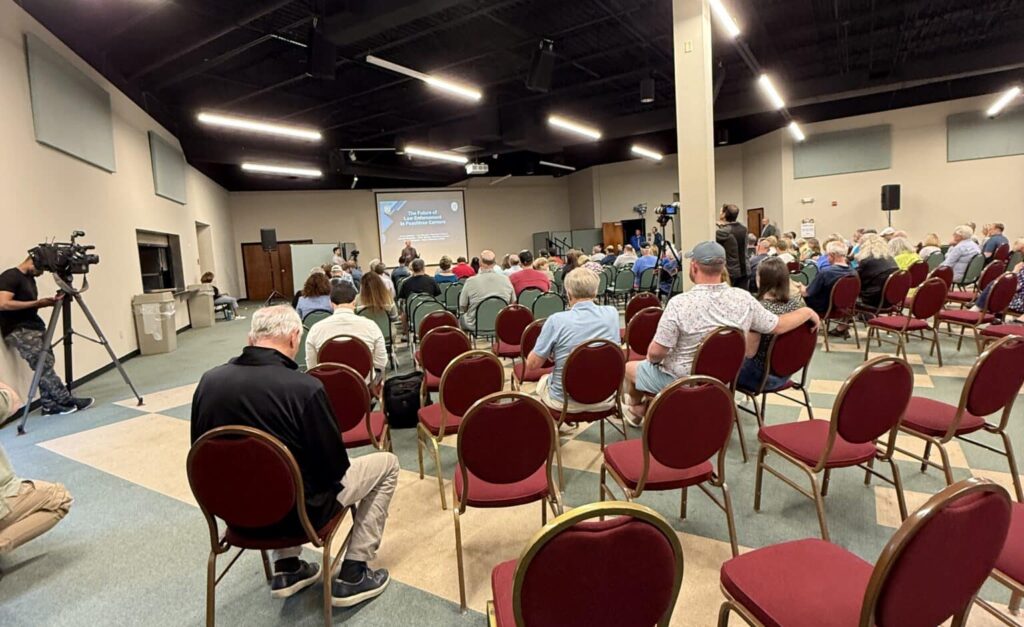
“[We thought] they would be able to enforce both local ordinance and state law, since they are a function of the city, and they could maybe be a force multiplier for Gwinnett since [marshals] don’t have to respond to 911 calls,” said Johnson.
But other issues arose shortly after the department was formed.
“We were still working towards getting that good balance, but we have been faced recently with a couple of things that make it harder for us,” said Johnson.
Seeking shared access
Instead of GCPD giving PTC marshals read-only, quick access to incident reports, dispatch calls and other information, the marshals department was required to file open records requests through the same process as any civilian.
“They were denied, as well as the city of Sugar Hill, [when] asked for the ability to see, not change, but see the computer-aided dispatch information, so that they would know where Gwinnett County police officers were; so that they could avoid stepping on their toes or maybe looking to support their efforts, and they haven’t been granted that,” said Johnson.
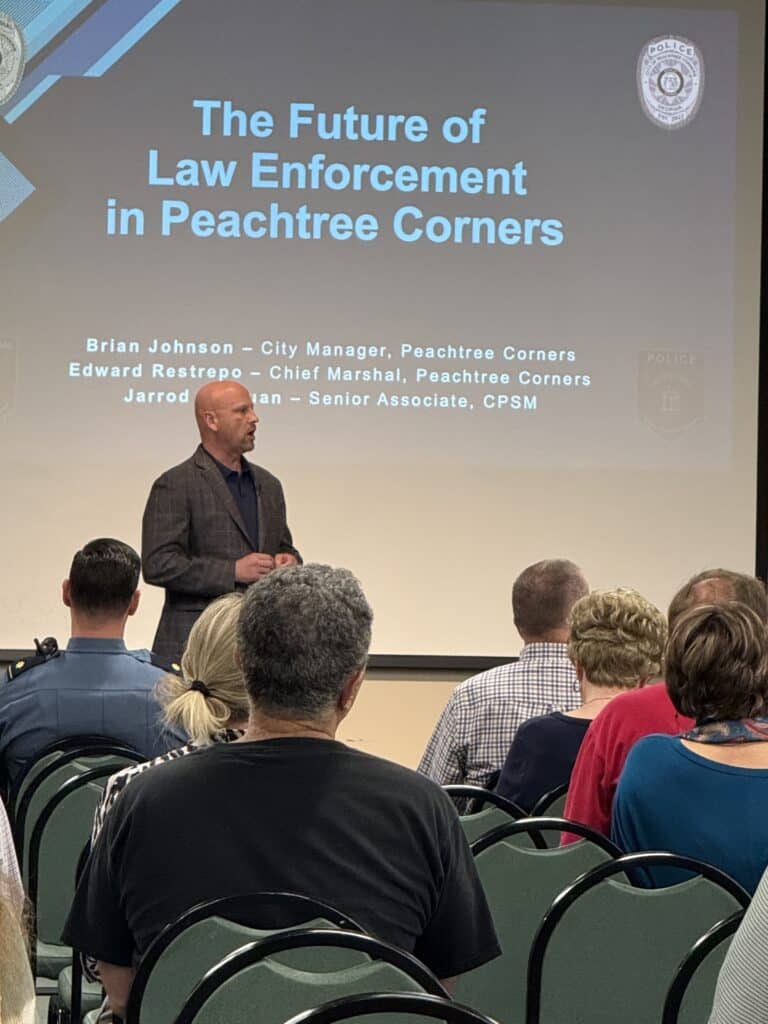
He added that the GCPD has video cameras on certain roadways that are used for various reasons, and law enforcement can use them when there’s crime in the area. Peachtree Corners marshals were denied access to those cameras.
“Conversely, we have a couple hundred cameras in the city, and we definitely want them to have access to them,” said Johnson. “So the frustration out of not being able to get that symbiosis between the marshals and police made us start thinking, all right, you know, is there another option?”
Community feedback
CPSM utilized data from GCPD to discern if Peachtree Corners could feasibly stand its own force. It also took into consideration crime trends, costs and many other factors. It recommended a 55-officer department, costing $12.1 million annually, with a $2.2 million upfront cost.
Comparing the two options to “renting vs. owning” the primary law enforcement agency in the city, Johnson presented pros and cons for each. Once the question-and-answer portion began, there was no obvious choice. Men and women, young and more advanced in age, had both similar and differing opinions.
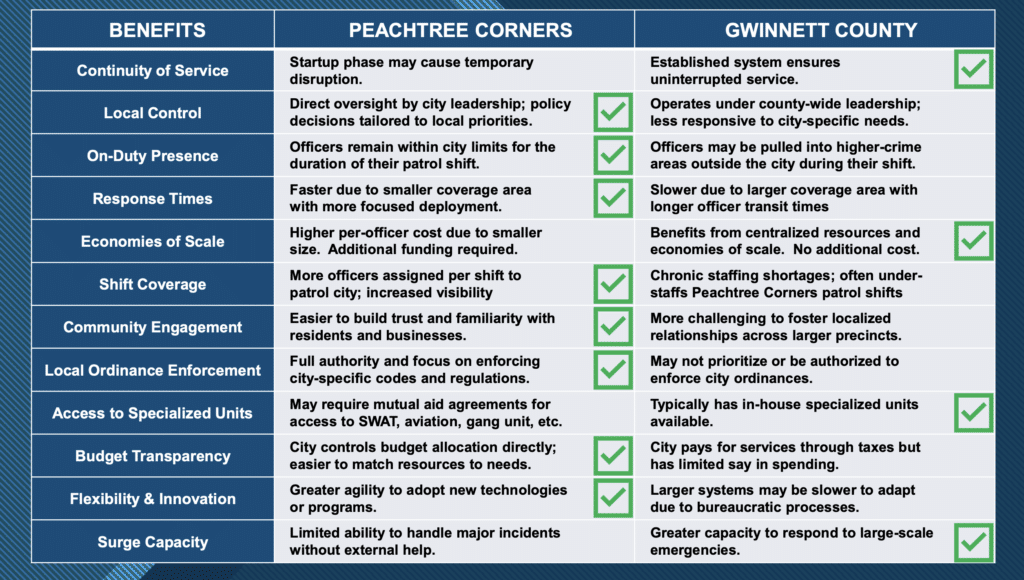
One young man, who identified himself as a local small business owner named Alexander, argued that with artificial intelligence increasing the efficiency of administrative tasks, perhaps the city wouldn’t need a full 68-man department of civilians and sworn officers.
Some accused the city of devising a solution in need of a problem. Others were concerned that paying approximately $100,00 for a study was throwing good money after bad.
But at the end of it all, the city is continuing to seek feedback and is encouraging everyone to make informed decisions. The meeting was taped and is available on the city website along with Johnson’s PowerPoint presentation, a copy of the study done by CPSM and a survey.
As far as a timeline goes, city officials would like folks to take the summer to mull it over and come back in the fall to take another look at the proposal.
Related
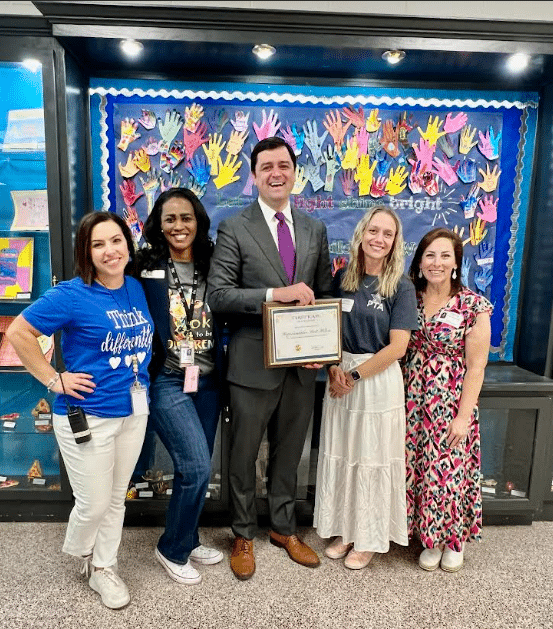
Simpson Elementary School celebrated Exceptional Children’s Week (ECW) last month with five days of special activities to recognize their special needs population and all of their exceptional students.
April 14–18 is set aside each year to celebrate children with disabilities, gifts and talents. This year’s ECW theme was Bridging Gaps and Building Futures, and the school was happy to take part.

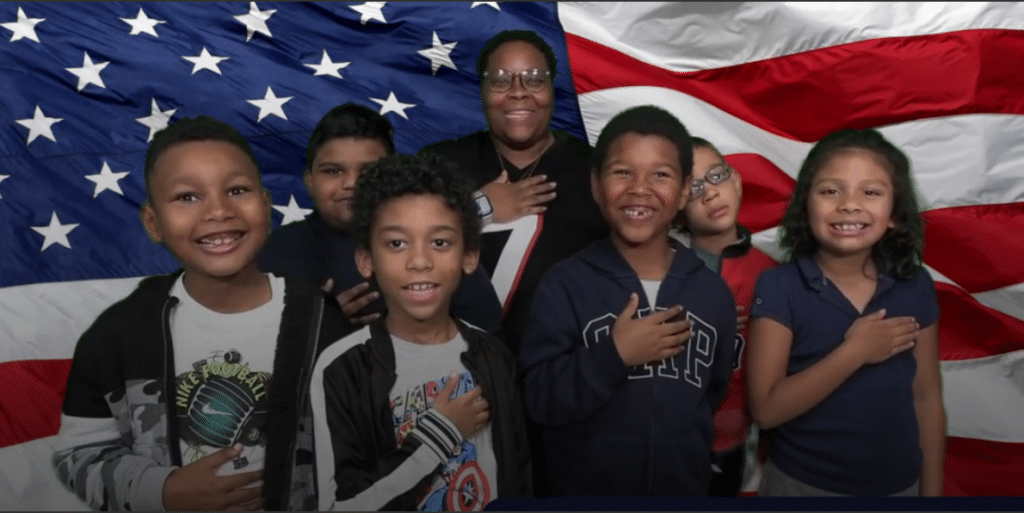
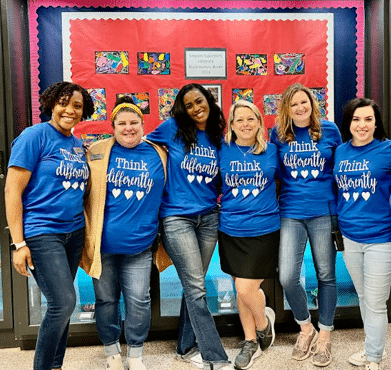
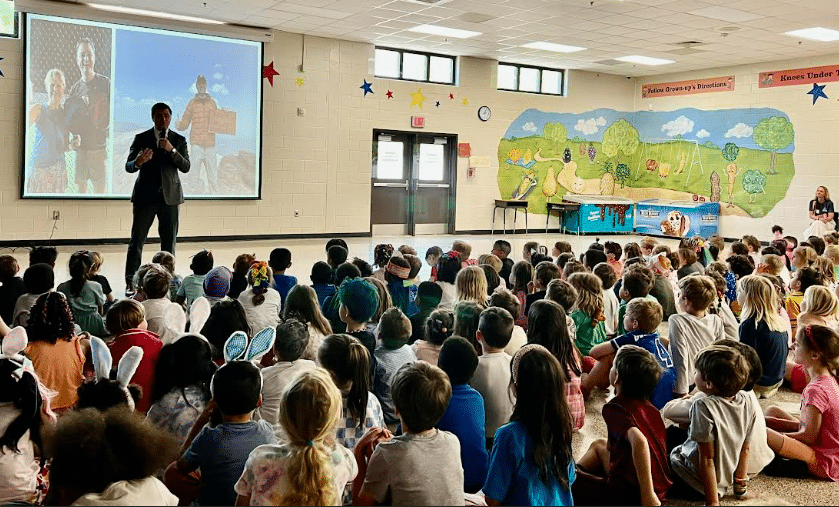
They highlighted each day of the week on the morning news with fun facts about notable people in society — and throughout history — who have overcome challenges with their disabilities, including actor Daniel Radcliffe (who has lived with dyspraxia for his entire life), Tom Cruise, Whoopi Goldberg, Frida Kahlo and Helen Keller.
Simpson Elementary’s technology team also pre-recorded various special needs classes reciting the Pledge of Allegiance every day of the week.
Guest speaker
To end their ECW with a bang, they invited former Simpson Elementary parent, State Representative Scott Hilton, to come in and speak to their K-2 classes about raising his son, Chase (who is autistic and now a student at Norcross High School), and how being different is okay.
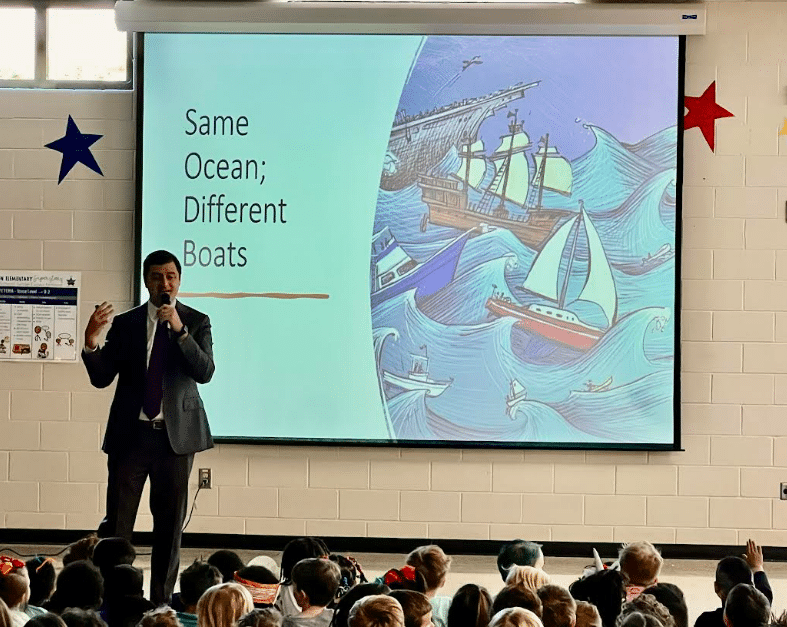
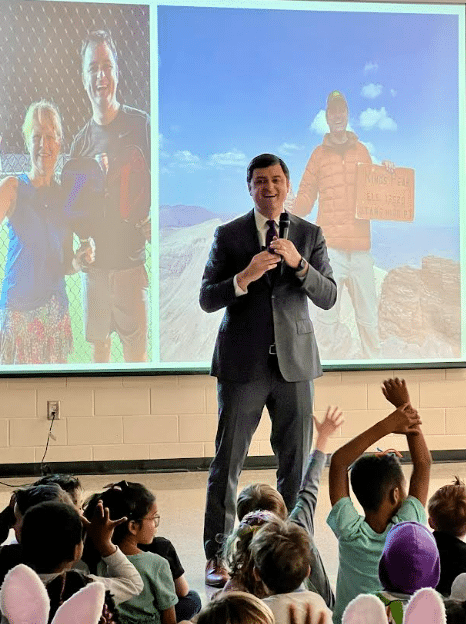
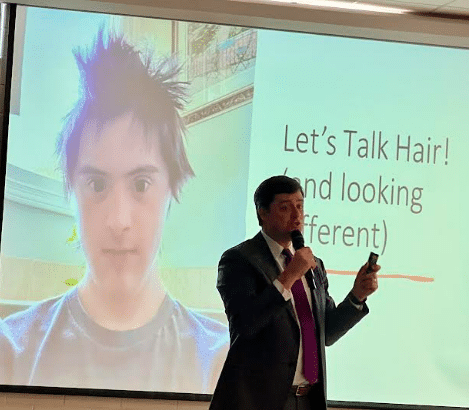
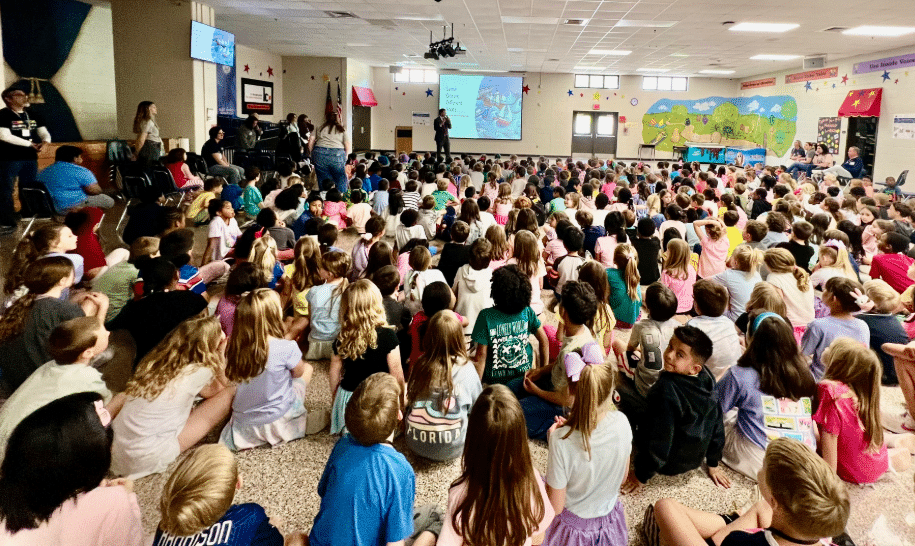
“Showing kindness and being inclusive is the best version of humanity,” said Dr. Taffeta Connery, Simpson Elementary School principal, in a statement about the event.
“Simpson Elementary has a special needs population of 214 (23%) of 946 students. [And] … we strive to ensure that our students are valued, recognized and instilled with high expectations for all.”
For more about Simpson Elementary, visit simpsones.gcpsk12.org.
Related
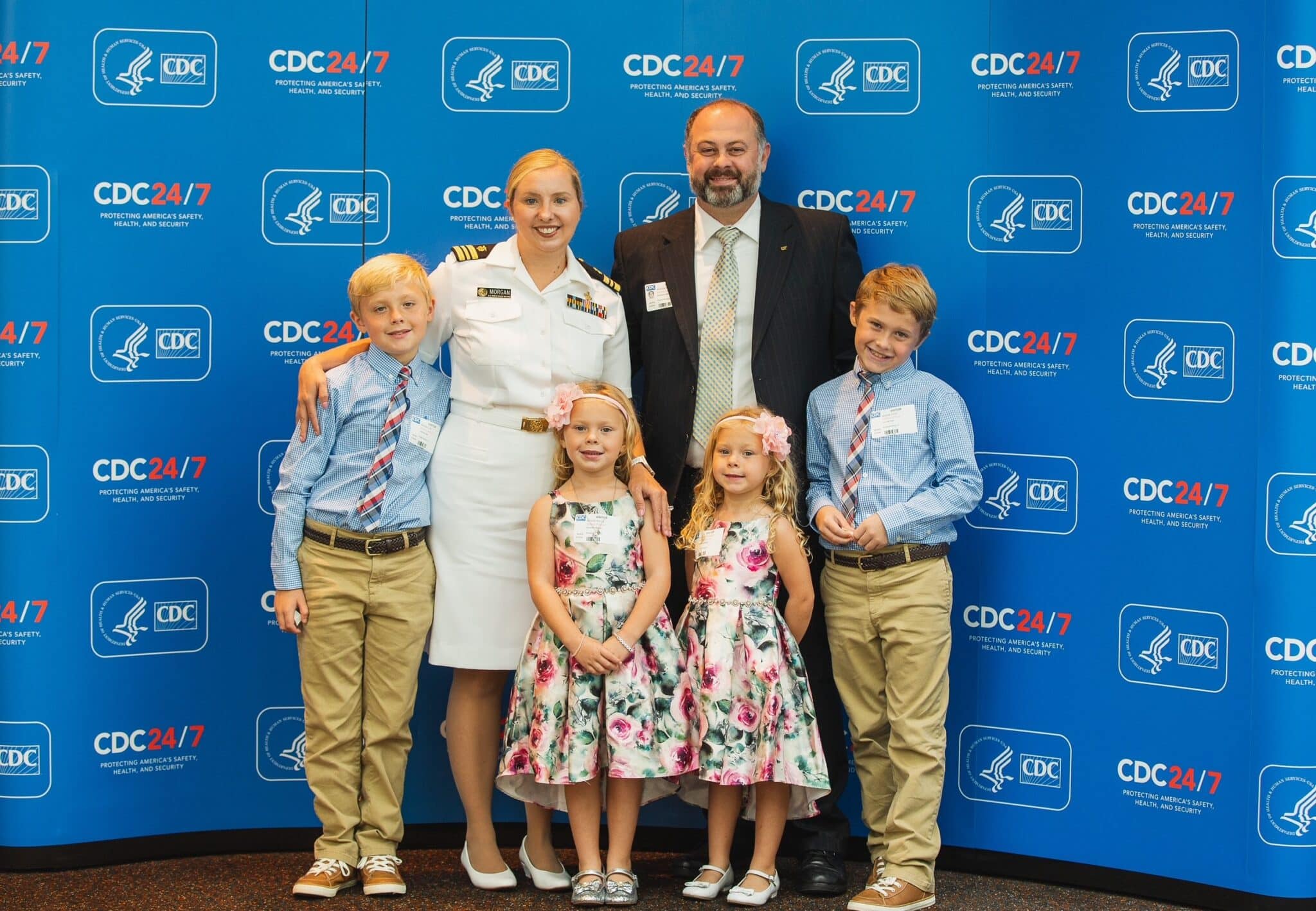
Motherhood comes with a lot of moving parts. For these Peachtree Corners moms, it also means leading teams, building careers and keeping the family schedule running. Most days, all at once.
This Mother’s Day, we’re spotlighting seven women in our community who are doing just that. They’re professionals in full-time leadership roles, showing up to strategy meetings by day and soccer games by night. They’re problem-solvers, planners, caregivers and coaches.
What connects them most isn’t just what they do, it’s how they do it. With intention. With humor. With support from partners, parents, friends and neighbors. And with a deep appreciation for the community they’ve built in Peachtree Corners.
Through their stories, we celebrate more than titles and to-do lists. We honor the quiet, constant work of showing up.
Tracy Lee
Tracy Lee leads with heart and vision as CEO of This Dot Labs, a software consultancy focused on helping businesses solve complex challenges through technology. Her engineering leaders collaborate with major clients like Stripe, DocuSign, Google, Wikipedia and Roblox. She’s passionate about her work.
“I love the mix of problem-solving and people leadership and knowing the work we do can make a real-world impact,” she said.
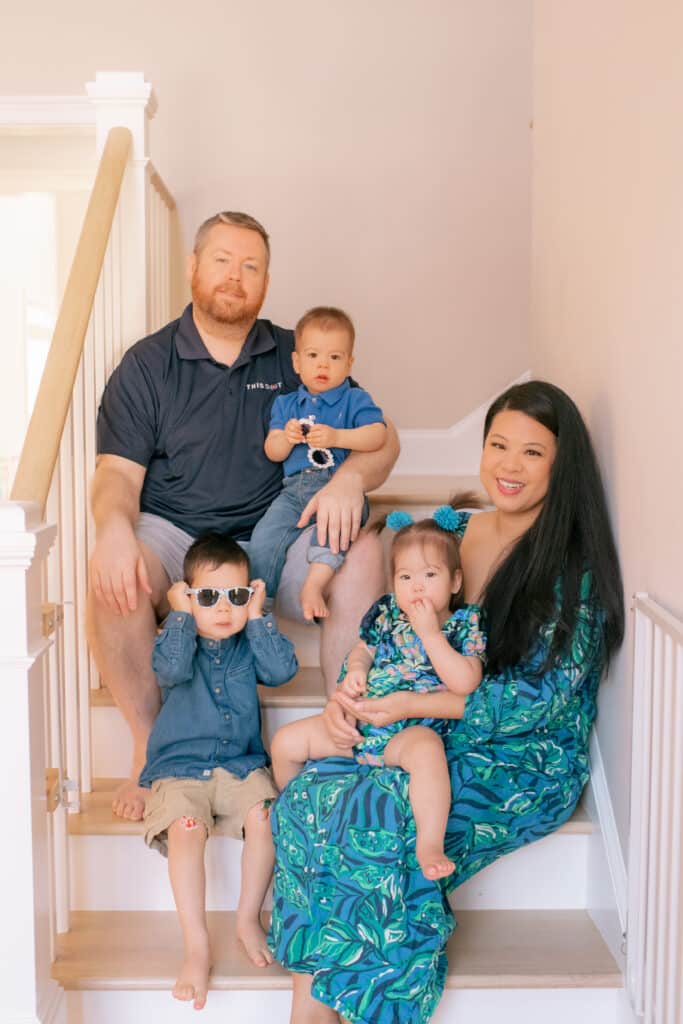
Tracy brings that same intentionality to her life at home, where she and her husband, Elliott Fouts, are raising three young children: William, 3, and twins Angelina and Marcus, who are 1.5. Despite the busy pace, Tracy is committed to being present in every role she plays.
“I have three full-time nannies and two part-time nannies, as well as girls around the neighborhood who are mama’s helpers to manage the chaos! With the help, we are able to do more and enjoy more time with our kids,” she said. “I try to be fully present, whether I’m in a meeting or building block towers in the living room. It’s never perfect, but we focus on what matters most in the moment.”
Tracy credits her support system for making it all possible. “I have an incredible partner and a strong support system between our nannies, friends and local community,” she said. “We have a local moms group for Asian moms called Georgia Asian Moms, and there are so many moms just in our neighborhood. It’s really great.”
Peachtree Corners has become a meaningful home base for the family. “We absolutely love it here,” she said. “There’s amazing programming for kids at The Forum every Tuesday in the spring and summer. It’s such a gem for young families.”
Weekends often include time outside and community adventures. “Sometimes the best hack is just piling everyone in the wagon and heading out for fresh air!” she said.
Tracy leans on a strong partner, a tight-knit group of friends and a local moms network. “It really takes a village,” she shared. “And I feel lucky to have one.”
Melissa Nicholson
Melissa Nicholson knows what it means to lead with heart and precision. As division vice president of program management & international solutions at Aya Healthcare, she helps internationally educated healthcare professionals enter the U.S. workforce.
“What I enjoy most is the opportunity to support these professionals in achieving their American dream,” she said. “While also contributing to improved patient outcomes across the country.”
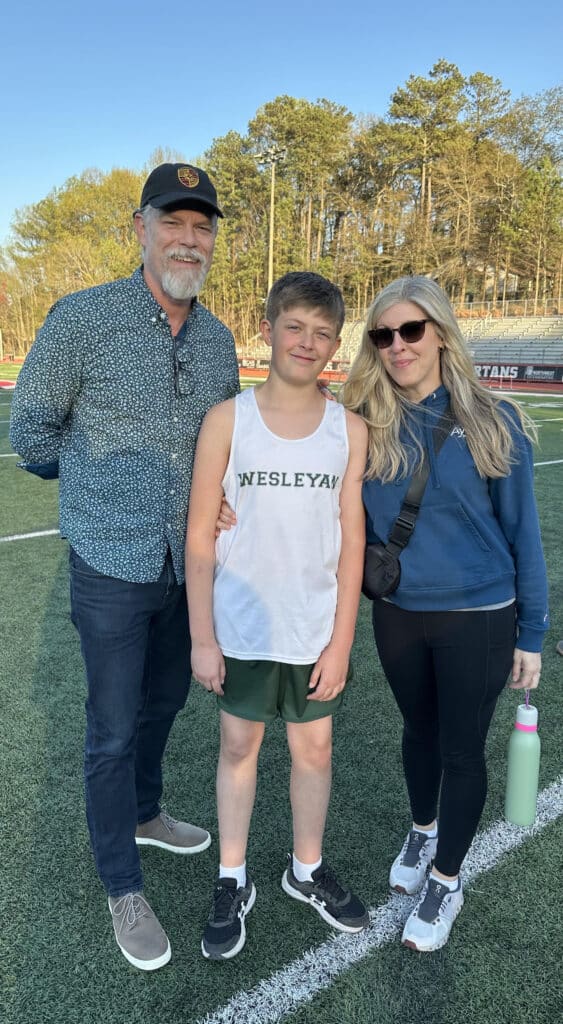
Melissa and her husband Greg recently celebrated 15 years of marriage. Their 12-year-old son, Luke, and a cat named Charlie bring a fun, loving dynamic of their own into the family. After relocating from East Atlanta a decade ago, they quickly embraced the Peachtree Corners community.
“It’s the people who make this community so special,” she said. “We’re truly grateful to count our neighbors as friends.”
Balancing an executive role with family life takes clarity and commitment. “I have to be very intentional with my time,” Melissa shared. She sets boundaries at work and makes sure her team knows when she’s off the clock for important family moments.
Wellness is a key part of her rhythm. “I recently started working out at Orangetheory Fitness,” she said. “I’ve noticed a significant boost in both energy and focus.” Sundays are for church and reflection.
When she travels for work, Greg holds it down at home. “We rely on each other to keep life running smoothly,” she said. “I’m grateful every day for that kind of partnership.”
On weekends, Melissa prioritizes quality time. Whether that’s a hike, pool day or baking something from scratch. “We’ve learned that if we don’t prioritize those moments, the weekends can quickly get taken over.”
Diva Hicks
For Diva Hicks, work isn’t just a job, it’s personal. As creative senior manager at CURE Childhood Cancer, her mission runs deep.
“At 12 years old, my sister was diagnosed with cancer,” she said. “CURE, in its early days, was a resource for my family.”

Her sister survived and now thrives. That experience shaped Diva’s career and continues to inspire her today. “This is my opportunity to give back to CURE for what it did for my family,” she said. “It’s rare to find a place where your purpose and passions collide.”
CURE also welcomes her whole family into the fold. “I get to bring my kids to events all the time,” she said. “They love feeling like they are a part of my work.”
Diva lives in Peachtree Corners with her husband John, their children Adair, 8, and Tripp, 6, and two golden doodles. “There is a sense of community here that I think is special,” she said.
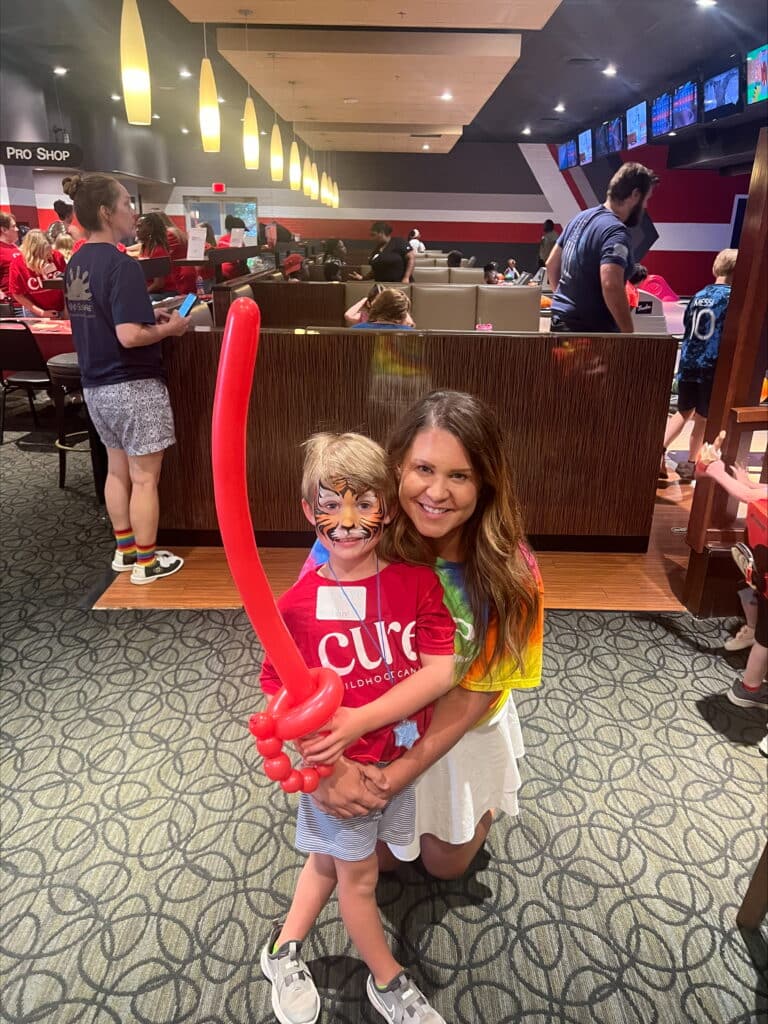
Balance is a daily effort. “John and I have tackled who helps with homework and on what days,” she said. “I would not be able to be the mom that I am without my village.”
She leads school committees and never misses events. “Is it easy? No,” she said. “But I honestly say, it’s not easy for any parent.”
Diva’s motivation is clear. “I want Adair to look at me and see that she can be a mom and have a career too.”
The family stays grounded with tennis weekends and careful planning. “We live by our calendar,” she said. “The more prepared I am, the easier life is.”
Kate Martin
Kate Martin knows how to bring structure to busy systems. As senior director of financial planning and analysis at Alloy Roofing, she finds energy in collaboration and clear strategy.
“In this role, I work closely with various teams across the business,” she said. “It supports the company’s strategy and performance.”
Kate and her husband, Nathan, are raising two children, 14-year-old Elliot and 10-year-old Evan, in Peachtree Corners. After ten years in the area, she credits the people for making it feel like home. “Life wouldn’t be the same without the relationships we’ve built here,” she said.
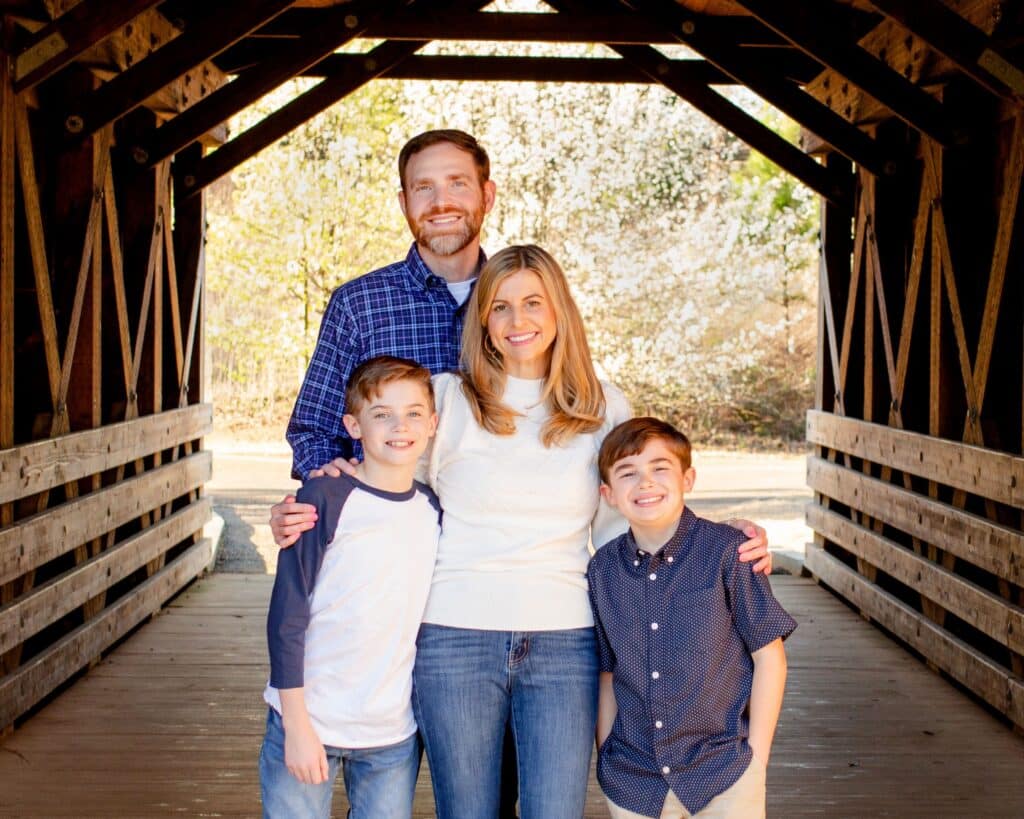
Balance starts with planning. “We keep a central Google calendar synced with all the family commitments that we review daily,” she said. “On Sundays we write on the kitchen boards.” Their chalkboard becomes the weekly roadmap, from meals to responsibilities.
“Seeing things laid out visually keeps me from overcommitting,” she added.
The family stays grounded by recognizing progress. “What keeps me motivated is celebrating both the big and small wins together,” she shared. “Sometimes, making it through the week is a victory in itself.”
Kate relies on a strong network. “We are very fortunate to have my parents nearby,” she said. “I also have an amazing network of women here in Peachtree Corners that I rely on.”
Her favorite hack? “An app Nathan created to help manage our calendars,” she said. “He created a solution to integrate these webcal subscriptions into a central subscription hub.” It’s called Skedj, and they’re piloting it now. “If you know this struggle and want to help us pilot the app, check out skedj.co!”
Linda Luna
As vice president at RSUI, Linda Luna manages risk while empowering people. She leads a team of underwriters who handle professional liability and cyber insurance. “I really enjoy my job because of its dynamic nature and the opportunity to help people in meaningful ways,” she said.
Whether she’s mentoring her team or protecting clients’ businesses, Linda finds value in impact. “It’s rewarding to know that my work has a positive impact on both my colleagues and our clients.”
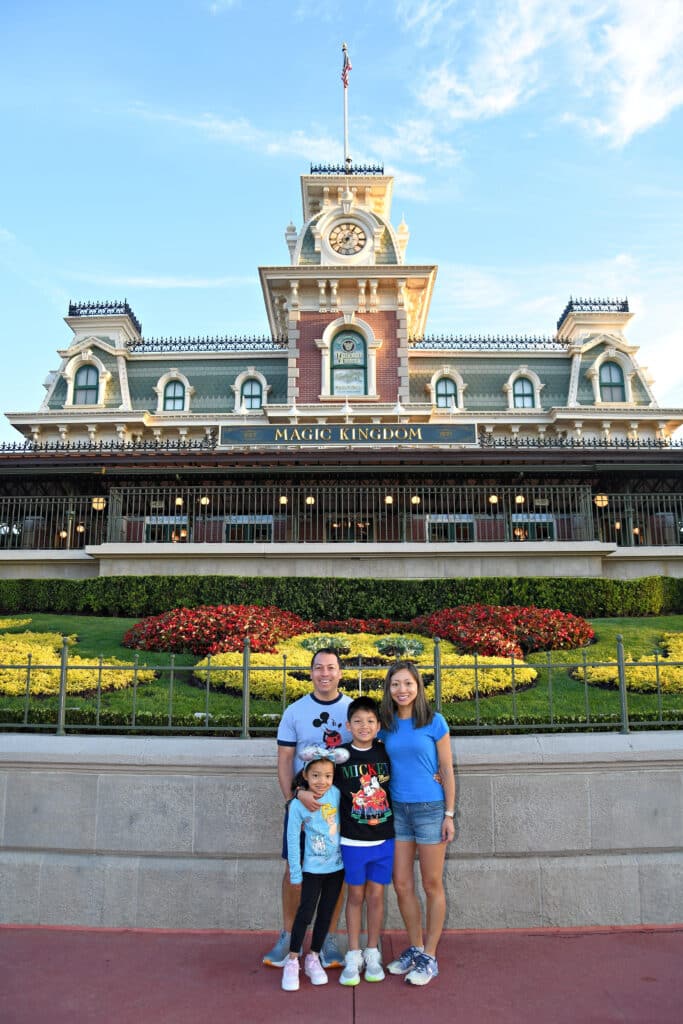
She and her husband, Ruben, are raising their two children, Dawson, 10, and Ava, 6, in Peachtree Corners. Her parents, though not under the same roof, are a constant part of daily life. “They help keep things running smoothly on the home front,” she said.
After nine years in the community, Linda has grown to love its blend of charm and convenience. “There is always something to do,” she said. “Whether it’s grabbing a bite at Ted’s or spending time with friends at Town Center.”
Balance comes from structure. “By establishing a solid schedule and sticking to it, I can ensure that my work commitments are met,” she said. “Being fully present allows me to strengthen my connection with my loved ones.”
When things get busy, she takes a practical approach. “Breaking it down into smaller, manageable tasks makes it much more approachable,” she said. “I remind myself to keep the bigger picture in mind and not sweat the small stuff.”
Linda’s support system is strong. “It truly takes a village, and I’m so grateful for mine,” she said. The family’s favorite tradition? A beach trip to 30A every May. “It’s our way of unwinding, reconnecting and making lasting memories together.”
Allison Blasetti
Allison Blasetti holds a national leadership role at Transamerica in the employee benefits division — a position that constantly challenges and motivates her. “What I enjoy most is the opportunity to use my talents to help my team,” she said. “I’m always growing and learning.”
She and her husband, John, are raising daughters Annie Mae, 8, and Olive, 6, in Peachtree Corners, where they’ve built strong ties in the community. “The amenities in our city provide many opportunities to run into friends around town or plan meet-ups,” she said.

Allison works from home and prioritizes clear boundaries. “I turn off my app notifications because it quickly pulls me back in to work,” she said. “I also have a dedicated workspace in my house where I can leave at the end of the workday.”
She’s developed the habit of resetting her mindset, as well. “I quickly recognize [when] I’m mentally ‘at work’ and actively redirect my thoughts back to being in the present moment.”
Allison’s mornings begin at Burn Bootcamp, where she finds motivation and connection. “Spending an hour with my Burn community helps me get grounded for the day,” she said.
To stay organized, she and her husband use a shared family calendar. Her mom steps in often, especially when work travel ramps up. “I really don’t know what we would do without her.”
On weekends, Allison coaches Olive’s soccer team with the Peachtree Corners Football Club. “It brings me so much joy to be outside, see my soccer friends and watch my girls have fun,” she said. “Coaching makes it even better because I get to support the community that means a lot to me.”
Samantha Morgan
Samantha Morgan is a commander in the U.S. Public Health Service, currently assigned to the Centers for Disease Control and Prevention. Over her career, she’s responded to major public health threats, including Ebola, Zika and COVID-19. Today, her work centers on injury prevention, with a focus on issues like suicide, drowning and traumatic brain injury.
“What I enjoy most is being part of CDC’s mission to save lives and protect people,” she said. “I’m proud to contribute to work that makes a tangible difference in communities across the country.”
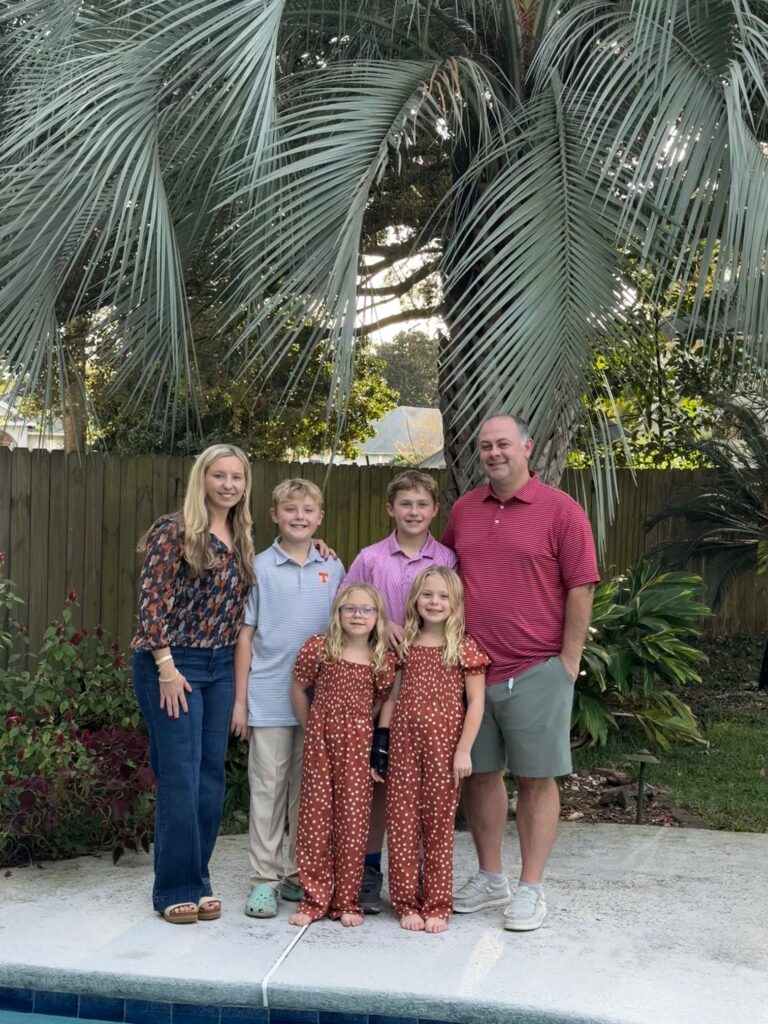
At home in Peachtree Corners, Samantha and her husband, Brian, are raising two sets of twins. Luke and Elliot are 12-years-old and love baseball, golf, basketball and band. Charlotte and Noelle are 8-years-old and enjoy piano, tumbling and tennis. “Life with four kids is wonderfully busy,” she said. “I often joke that I’m an unpaid Uber driver!”
After more than a decade in the neighborhood, Samantha credits their support system for helping them manage the day-to-day. “Our neighbors and friends — our village — have supported us through the hardest moments and celebrated life’s greatest joys with us,” she said.
Structure is key to keeping things on track. “We live and breathe by our family calendar,” she said. “Shared schedules, group texts and carpooling help us keep things running.”
Her children remain Samantha’s biggest motivators. “They know, ‘mom’s going to work to help make the world a safer place,’” she said.
The family also leans on routines and simple joys. “Checklists are my go-to mom hack,” she shared. One of their favorite traditions is make-your-own-pizza night. “It’s messy, silly and something we all genuinely look forward to.”
The seven women featured here offer a glimpse into the lives of working moms in Peachtree Corners. Each one balances career, family and community with care and intention. They are just a few of the many women — both working and stay-at-home — who nurture, organize and uplift the people around them every day.
Whether leading teams or guiding their children, mothers across this community show up with strength, love and quiet determination.
You’ll find this story in the May/June issue of Peachtree Corners Magazine, available in print and digital edition.
Related
Read the Digital Edition
Subscribe
Keep Up With Peachtree Corners News
Join our mailing list to receive the latest news and updates from our team.
You have Successfully Subscribed!

Digital Edition

PCBA Announces 2025 Scholarship Winner

Official City Merchandise Line Debuts This Saturday at Town Green

Paul Duke STEM High School Student Earns CGO Scholarship

World Blood Donor Day Starts Here: Theo’s Miracle, Katherine’s Mission [Podcast]

Executive Function: A Tribute to Working Moms

Peachtree Corners Grows Business Opportunities Through Economic Development

Simpson Elementary Marks Exceptional Children’s Week

D1 Training Brings New Fitness Concept to Peachtree Corners

Peachtree Corners Hosts Discussion About the Future of Local Policing

City of Peachtree Corners Awarded Certificate of Achievement From GFOA for Seventh Straight Year

Simpson Elementary Marks Exceptional Children’s Week

Executive Function: A Tribute to Working Moms

Official City Merchandise Line Debuts This Saturday at Town Green

Peachtree Corners Grows Business Opportunities Through Economic Development

Digital Edition

Light up the Corners [Video]

Capitalist Sage: Business Leadership in Your Community [Podcast]

Cliff Bramble: A Culinary Adventure through Italy

Top 10 Brunch Places in Gwinnett County

A Hunger for Hospitality

THE CORNERS EPISODE 3 – BLAXICAN PART 1

Top 10 Indoor Things To Do This Winter

The ED Hour: What it takes to Remove Barriers from Education





